Visit Yongling Mausoleum: A Majestic Tribute to the Past
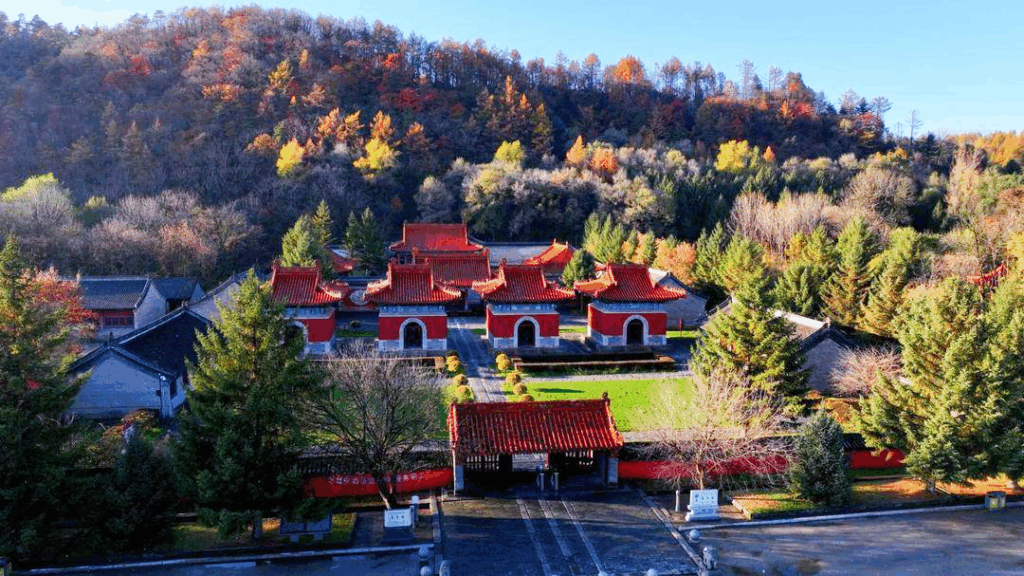
An Essential Guide to Visiting Yongling Mausoleum
Nestled in the heart of Chengdu, the Yongling Mausoleum (永陵) stands as a testament to the rich history of the Shu Dynasty and the legacy of Emperor Wang Jian. This unique imperial tomb, discovered serendipitously during World War II, offers visitors a rare glimpse into the past, showcasing an architectural marvel that is unlike any other in China. Unlike traditional mausoleums, Yongling is built above ground, encased within a serene landscape of pine trees and intricate gardens that whisper tales of ancient rituals and sacred music.
As you approach the mausoleum along the Royal Way, you’ll be greeted by a series of eight meticulously crafted figures leading you to the entrance. Step inside, and you’ll find yourself enveloped in an atmosphere that reverberates with history, where the burial chamber and its elaborate carvings tell stories of the emperor and his reign. The thoughtfully curated Yong Ling Museum, located behind the mausoleum, houses a treasure trove of artifacts, including the emperor’s jade belt and ceremonial vessels, further enhancing your understanding of this significant site.
Whether you are a history enthusiast, an architecture aficionado, or simply seeking a peaceful retreat from the bustle of Chengdu, a visit to Yongling Mausoleum promises to be a rewarding experience. Prepare to delve into the depths of China’s imperial history, as a journey to Yongling invites you to reflect on the grandeur of the past amidst the tranquil beauty of its surroundings.
In This Guide
- An Essential Guide to Visiting Yongling Mausoleum
- The Rich History and Legends of Yongling Mausoleum
- Main Highlights: What You Absolutely Can’t Miss
- Planning Your Visit: A Practical Guide
- Tickets: Prices, Booking, and Tips
- How to Get There: A Complete Transportation Guide
- Local Cuisine and Accommodation Nearby
- Frequently Asked Questions
- Final Thoughts on Your Trip
The Rich History and Legends of Yongling Mausoleum
Nestled in the verdant landscape of Chengdu, the Yongling Mausoleum is not merely a burial site but a testament to the grandeur of the Shu Dynasty and its legendary ruler, Wang Jian. Born in 847 AD, Wang Jian rose from humble beginnings to establish the Shu Kingdom during a tumultuous period of Chinese history. His reign, marked by prosperity and cultural flourishing, lasted until his death in 918 AD. The mausoleum, which stands today as a symbol of his legacy, is the only imperial tomb in China built above ground.
The discovery of the Yongling Mausoleum in 1942 was serendipitous, occurring during excavation work for air raid shelters. As archaeologists unearthed the site, they revealed a remarkable structure that had lain hidden beneath the earth for centuries. The mausoleum is characterized by its earthen mound, now cloaked in a canopy of pine trees, which was once believed to be a sacred hill where musicians played the zither in homage to the emperor.
Visitors to the mausoleum are greeted by a grand approach known as the Royal Way, adorned with eight intricately carved figures. This impressive pathway leads to the main entrance, where a gentle ramp descends into the tomb’s burial chamber. Inside, the atmosphere is imbued with reverence. A replica statue of Wang Jian rests behind the coffin plinth, its presence a poignant reminder of the emperor’s enduring legacy. The intricate carvings that embellish the base of the coffin add to the tomb’s mystical allure, hinting at the spiritual significance that such structures held in ancient China.
Adjacent to the mausoleum, the Yong Ling Museum offers an insightful glimpse into the artifacts excavated from the site. Among these treasures are a headless statue of Wang Jian’s wife and a collection of sacred vessels, including silver bowls and ornamental pigs. Notably, the emperor’s jade belt and seal are proudly displayed, each piece telling a story of power and prestige. The museum’s exhibits are well curated, providing an enriching context for the history and significance of the mausoleum, though English-speaking visitors might find it helpful to request a guidebook, as the complimentary literature is primarily in Chinese.
Surrounded by serene gardens and accompanied by a temple and bell, the Yongling Mausoleum is not just a historical site; it is a peaceful sanctuary that invites contemplation and exploration. As you wander through the lush landscape, you may stumble upon reconstructions of musicians and statues celebrating the emperor’s life. These artistic representations serve to immerse you further into the culture and heritage of the Shu Dynasty, enhancing your understanding of this fascinating period.
To fully appreciate the depth of Yongling Mausoleum’s history and the legends that surround it, allocate at least three hours for your visit. With photography permitted throughout the site, you’ll want to capture the beauty of this unique imperial tomb, which stands as a silent witness to the rise and fall of an extraordinary dynasty. Whether you’re a history enthusiast or simply curious about China’s rich cultural tapestry, the Yongling Mausoleum is a must-see destination that promises to leave a lasting impression.
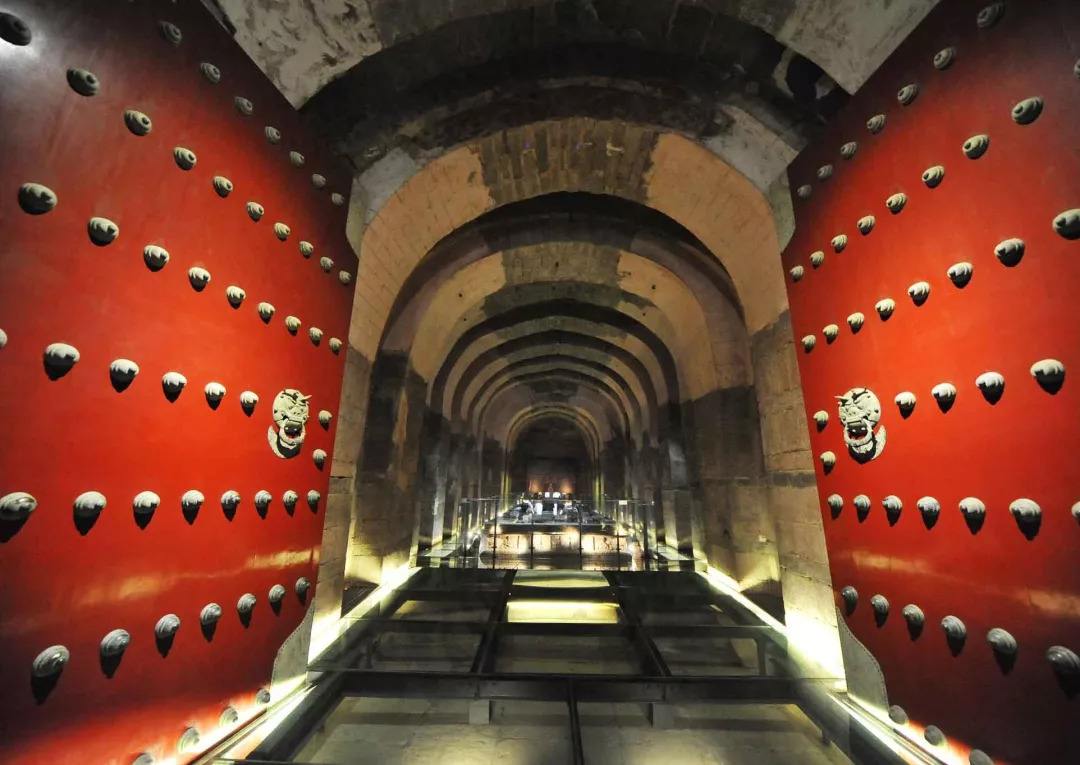
Yongling Mausoleum.
Main Highlights: What You Absolutely Can’t Miss
When visiting the Yongling Mausoleum (永陵), there are several captivating highlights that you absolutely cannot miss. This unique site is not just a tomb but a window into the rich history of the Shu Dynasty and the life of its Emperor, Wang Jian.
The Tomb of Wang Jian
At the heart of Yongling Mausoleum lies the tomb of Wang Jian, the founding emperor of the Shu Kingdom, who reigned from 847 to 918 AD. What sets this mausoleum apart is its above-ground structure, making it the only imperial tomb of its kind in China. The tomb was unearthed in 1942 during excavation work for air raid shelters, revealing a fascinating glimpse into the past. As you approach, take note of the mound, once considered a sacred hill where zither musicians entertained.
The Royal Path
As you enter the mausoleum, you’ll walk along the Royal Way, adorned with eight symbolic figures that lead you toward the main entrance. This pathway is not only visually striking but also imbued with historical significance, setting the tone for the grandeur of what lies ahead.
The Burial Chamber
Prepare to be awed as you descend into the burial chamber itself. The innovative design features an upward ramp leading to a space where a replica statue of Emperor Wang Jian stands behind the coffin plinth. Interestingly, his original coffin was shackled to its base, a striking detail that hints at the beliefs and customs of the time. The intricate carvings that decorate the base of the coffin are a testament to the artistry of the era.
The Yong Ling Museum
Adjacent to the mausoleum, the Yong Ling Museum is a treasure trove of artifacts unearthed from the tomb, and your ticket to the mausoleum includes admission. Here, you can marvel at a collection that includes the emperor’s jade belt and seal, sacred silver vessels, and a statue of Yong Ling alongside his headless wife. One of the most captivating exhibits is a scale model of the tomb, providing context to its grandeur.
Surrounding Gardens and Temple
After exploring the mausoleum and museum, take a leisurely stroll through the beautifully landscaped gardens that envelop the site. The serene environment is perfect for reflection, and you’ll find a temple and a bell worthy of exploration. The gardens offer a peaceful respite and a picturesque backdrop for photos.
Photographic Opportunities
Don’t forget your camera! Photography is allowed throughout the mausoleum and museum, making it easy to capture the intricate details and serene landscapes. The combination of historical significance and natural beauty provides endless opportunities for stunning shots.
Accessibility
Finding your way around the site is straightforward, but keep an eye out for the Yong Ling Museum, which is easily overlooked. It’s located behind the mausoleum, accessible via a marble bridge. The ticket office is discreetly positioned to the left of the main entrance, so be sure to grab your ticket before diving into the history.
Conclusion
A visit to Yongling Mausoleum is not just a journey through time; it’s an immersive experience filled with history, culture, and beauty. Allow at least three hours to fully appreciate all that this remarkable site has to offer. Whether you’re a history buff or a casual traveler, the Yongling Mausoleum promises an unforgettable exploration of China’s imperial past.
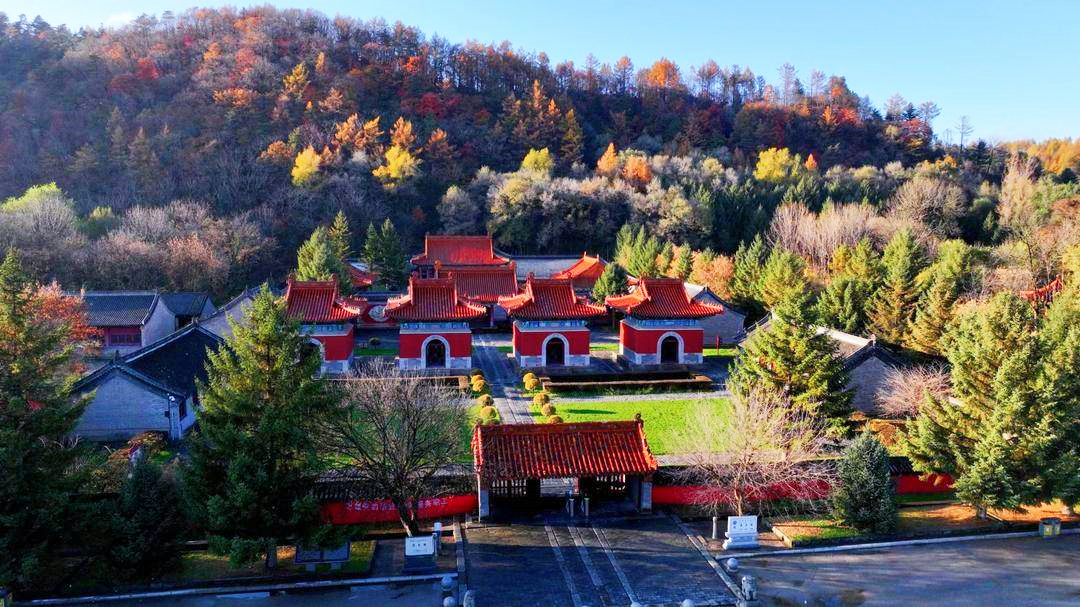
Yongling Mausoleum.
Planning Your Visit: A Practical Guide
Planning Your Visit to Yongling Mausoleum
The Yongling Mausoleum, the final resting place of Wang Jian, the Emperor of the Shu Dynasty, is a captivating site that provides a unique glimpse into ancient Chinese history. Nestled amidst serene gardens and rich cultural heritage, this mausoleum is a must-visit for any traveler exploring Chengdu. Here’s your practical guide to make the most of your visit.
Getting There
Yongling Mausoleum is conveniently located in Chengdu, a city well-connected by public transport. The mausoleum is accessible via local buses and taxis, and there are several parking facilities nearby if you choose to drive. The main entrance is along the main road, but keep an eye out for the ticket office, which is slightly to the left and may not be immediately obvious.
Admission Fees and Hours
- Entrance Fee: ¥20 (approximately $3)
- Hours: The mausoleum is typically open daily, but it’s advisable to check the specific hours of operation before your visit. Generally, it is open from 8:30 AM to 5:30 PM.
What to Expect
-
The Approach: As you make your way along the Royal Way, admire the eight figures that guide you to the main entrance, setting the tone for the historical journey ahead.
-
Exploring the Mausoleum: Inside, you’ll find an upward ramp that leads to the burial chamber. Here, a replica of the emperor rests behind his coffin, which is intricately designed with sacred carvings. The entire structure is unique; it’s the only imperial mausoleum built above ground in China.
-
Yong Ling Museum: Don’t miss the museum located behind the mausoleum, which houses artifacts excavated from the site, including sacred vessels, the emperor’s jade belt, and a headless statue of his wife. Admission to the museum is included in your mausoleum ticket, and it’s an educational experience worth your time.
-
Gardens and Surroundings: Enjoy a leisurely stroll through the gardens that surround the mausoleum. There’s also a temple and bell nearby, adding to the tranquil atmosphere. Look out for the statues of musicians and the emperor’s seal outside the park, which serve as a cultural centerpiece.
-
Photography: Feel free to capture the beauty of the mausoleum and its surroundings, as photography is allowed throughout the site.
Recommended Duration
Allocate at least three hours for your visit. This will give you ample time to explore the mausoleum, visit the museum, wander through the gardens, and soak in the rich history without feeling rushed.
Tips for a Smooth Visit
- Language: While the museum offers information in English, the free guidebook is only available in Chinese. Consider downloading a translation app or bringing a phrasebook for assistance.
- Weather: Check the weather forecast before your visit. The site is mostly outdoors, so dress appropriately for the conditions.
- Timing: Visit in the morning or later in the afternoon to avoid peak tourist times, allowing for a more peaceful exploration of the site.
Nearby Attractions
If you have extra time, consider visiting other nearby attractions such as:
– Kuanzhai Alley: A historic pedestrian street filled with shops and eateries.
– Jinli Pedestrian Street: Known for its vibrant atmosphere and local snacks.
– Wenshu Yuan Monastery: A serene religious site that offers a glimpse into Buddhist culture.
Dining Options
After your visit, indulge in local cuisine at one of the nearby restaurants. Chengdu is famous for its Sichuan food, so don’t miss the opportunity to try some spicy dishes!
With this guide in hand, you’re ready to embark on a fascinating journey through history at Yongling Mausoleum. Enjoy your visit!
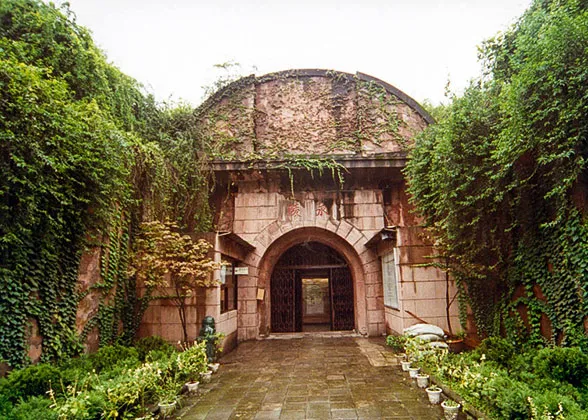
Yongling Mausoleum.
Tickets: Prices, Booking, and Tips
Visiting the Yongling Mausoleum is a must for anyone interested in the rich history of the Shu Dynasty. Here’s everything you need to know about ticket prices, booking options, and useful tips to enhance your experience.
Ticket Information
-
Entrance Fee: The ticket price to access the Yongling Mausoleum is ¥20 (approximately $3). This fee includes admission to the mausoleum as well as the Yong Ling Museum, which houses numerous artifacts excavated from the site.
-
Ticket Purchase: Tickets can be purchased at the ticket office, conveniently located to the left of the main entrance along the main road. Be aware that the ticket office may not be immediately obvious, so keep an eye out for signs.
Booking Tips
-
Timing Your Visit: It’s recommended to allocate at least three hours to fully explore both the mausoleum and the museum. This will allow you to appreciate the intricate carvings, the replica statue of Emperor Wang Jian, and the various artifacts, including his jade belt and seal.
-
Museum Access: The Yong Ling Museum is situated behind the mausoleum, accessible via a marble bridge. Look for signs directing you to the museum—it can be easy to miss if you’re not aware of its location.
-
Photography: Feel free to bring your camera! Photography is allowed in all areas of the mausoleum and museum, so don’t forget to capture the stunning architecture and historical treasures.
Additional Recommendations
-
Guided Materials: While there is a free illustrated guidebook available at the museum entrance, it is only in Chinese. However, English information is well-presented throughout the exhibits, so you won’t miss out on understanding the significance of what you see.
-
Surroundings: Take some time to stroll around the beautiful gardens surrounding the mausoleum. There’s also a temple and bell that are worth checking out, as well as a collection of statues outside the park dedicated to musicians, which adds to the cultural ambiance of the area.
By following these tips, you’ll be well-prepared for your visit to the Yongling Mausoleum, ensuring a rewarding and enlightening experience as you delve into the history of one of China’s unique imperial tombs.
How to Get There: A Complete Transportation Guide
Getting to Yongling Mausoleum: Your Comprehensive Transportation Guide
Visiting the Yongling Mausoleum, the final resting place of Emperor Wang Jian of the Shu Dynasty, is a captivating experience that offers a glimpse into China’s rich history. Conveniently located in Chengdu, this unique imperial tomb can be accessed through various means of transportation. Here’s how to make your journey to this fascinating site as smooth as possible.
By Air
If you’re arriving from abroad, the nearest major airport is Chengdu Shuangliu International Airport (CTU). This bustling airport connects Chengdu with numerous international and domestic destinations. Once you land, you have a couple of options to reach Yongling Mausoleum:
- Taxi: The most straightforward option, taking a taxi from the airport will take around 30-40 minutes, depending on traffic. Make sure to have the destination name written in Chinese (永陵) for ease of communication.
- Airport Shuttle: The airport shuttle bus offers a cost-effective way to reach the city center. You can then transfer to a local taxi or public transport to get to the Mausoleum.
By Train
Chengdu is well-connected by rail, making it easy to arrive from other major cities in China. If you’re traveling from cities like Beijing, Shanghai, or Xi’an, consider taking a high-speed train to Chengdu East Railway Station.
From Chengdu East Railway Station, you can reach Yongling Mausoleum by:
- Taxi: A taxi ride should take about 15-20 minutes.
- Metro: Take Line 2 to Tianfu Square Station, then transfer to Line 1 and get off at Chunxi Road Station. From there, a short taxi ride or a local bus will take you to the Mausoleum.
By Public Transport
Chengdu has a reliable public transportation system that includes buses and the metro. Here’s how to use them to get to Yongling Mausoleum:
- Metro: The closest metro station to Yongling Mausoleum is Yongling Station (永陵站) on Line 4. Upon exiting, it’s a short walk to the entrance.
- Buses: Several bus lines connect to the area. Look for buses that stop near Yongling Mausoleum. The exact bus numbers may vary, so it’s a good idea to check local transport apps or ask locals for assistance.
By Taxi or Ride-Hailing Apps
Using a taxi or ride-hailing service like Didi Chuxing is a convenient option, especially if you are traveling in a group or carrying luggage. Simply input “Yongling Mausoleum” or “永陵” into the app, and you’ll be on your way. This option is particularly useful if you want door-to-door service.
Parking Facilities
For those who prefer to drive, there are parking facilities available near the Mausoleum. However, be mindful of local driving regulations and parking fees.
Final Tips
- Plan Ahead: Traffic in Chengdu can be unpredictable, especially during peak hours. Allow extra time for your journey.
- Bring Cash: While many places accept credit cards, having cash on hand for small purchases or local transport can be helpful.
- Check Opening Hours: Before your visit, confirm the opening hours of the Mausoleum and the museum to ensure you have ample time to explore.
With various transportation options at your disposal, visiting the Yongling Mausoleum is not just a trip into history but also an adventure in navigating one of China’s vibrant cities. Enjoy your visit!
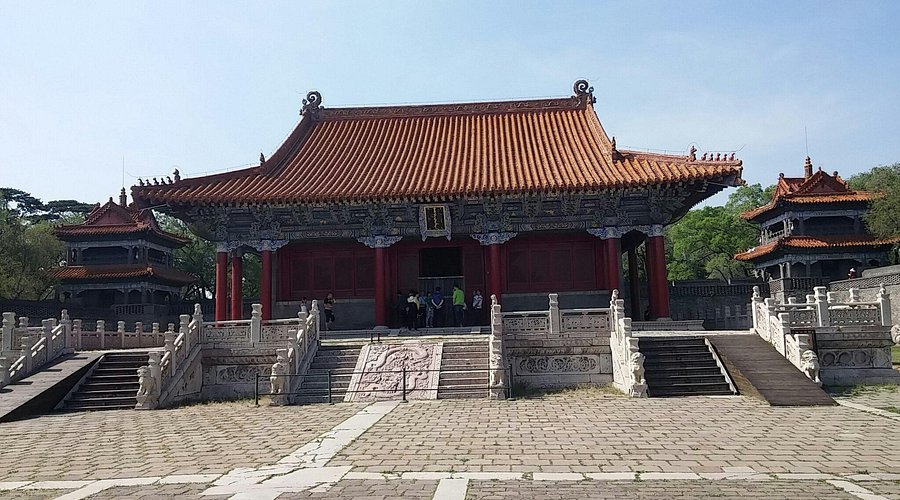
Yongling Mausoleum.
Local Cuisine and Accommodation Nearby
For travelers visiting the Yongling Mausoleum, a delightful culinary experience awaits just a stone’s throw away, alongside several cozy accommodation options that ensure a comfortable stay.
Local Cuisine
Chengdu is renowned for its vibrant food scene, particularly its spicy Szechuan cuisine. Here are some local eateries that you shouldn’t miss:
-
Liao PaiGu (YongLing Road)
Located just 0.1 miles from the mausoleum, this restaurant specializes in crispy pork ribs. The dish is a local favorite, and the restaurant’s cozy atmosphere makes it a perfect spot to unwind after a day of exploring. -
YiPin ZhouDian (San DongQiao)
A mere 0.2 miles away, this eatery is famous for its traditional Szechuan-style congee. With a variety of toppings, it’s a comforting meal to start your day or enjoy as a light lunch. -
ZiGong TeSe Guan
Approximately 0.2 miles from the site, this restaurant offers a range of Szechuan dishes, including spicy hot pot and flavorful stir-fries. The vibrant décor and friendly staff enhance the dining experience. -
AYu Lian
Just a short 0.3-mile walk will lead you to this Asian fusion restaurant that serves a mix of traditional and contemporary dishes. The ambiance is relaxed, making it an excellent place for a leisurely dinner. -
Avatar Restaurant
Located 0.4 miles away, this spot offers unique Xinjiang dishes, including various kebabs and bread. The flavors are distinct, providing a wonderful contrast to the local Szechuan fare.
Accommodation
After a satisfying meal, you might want to settle down for the night. Here are some recommended accommodations near the Yongling Mausoleum:
-
Chengdu Yulin Hotel
This hotel offers comfortable rooms and is situated about 1.1 miles from the mausoleum. Guests can enjoy modern amenities and a peaceful environment, perfect for relaxation after a day of sightseeing. -
The Ritz-Carlton, Chengdu
If you’re looking for luxury, this upscale hotel is about 2 miles away. With elegant rooms, a full-service spa, and exquisite dining options, it’s ideal for those seeking a premium experience. -
Chengdu Holiday Inn Express
Located approximately 1.5 miles from the mausoleum, this hotel provides great value with its clean and comfortable rooms. It’s an excellent choice for budget-conscious travelers who don’t want to compromise on quality. -
Home Inn
A budget-friendly option about 1.2 miles away, Home Inn offers cozy accommodations with basic amenities. It’s perfect for travelers who prefer simplicity without overspending. -
Sheraton Chengdu Lido Hotel
Situated around 1.6 miles from the Yongling Mausoleum, this hotel features spacious rooms and top-notch facilities, including a fitness center and restaurants serving diverse cuisines.
With delicious Szechuan food and varied accommodation options all within easy reach, your visit to the Yongling Mausoleum promises to be as enjoyable as it is enlightening. Make sure to savor every moment in this culturally rich area!
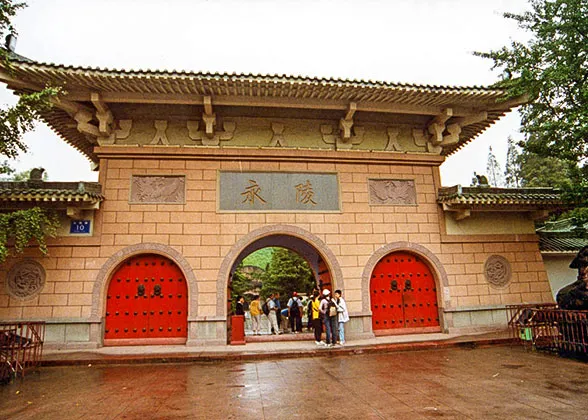
Yongling Mausoleum.
Frequently Asked Questions
-
What are the opening hours for Yongling Mausoleum?
Yongling Mausoleum is typically open to visitors from 8:00 AM to 6:00 PM, but it’s always a good idea to check for any seasonal changes or special events that may affect these hours. -
How much does it cost to visit the Mausoleum?
Admission to Yongling Mausoleum is approximately ¥20, which includes access to the onsite museum that houses various artifacts excavated from the tomb. -
Is there public transportation available to get to the Mausoleum?
Yes, the Yongling Mausoleum is accessible by public transport. You can take local buses or taxis to reach the site, and it’s advisable to check local transport apps or maps for the best routes from your location. -
Are there guided tours available?
While self-guided exploration is popular, there are also guided tours available that provide deeper insights into the history and significance of the Mausoleum. Check local tour operators or the ticket office for options. -
Can I take photographs inside the Mausoleum and museum?
Yes, photography is allowed in all areas of Yongling Mausoleum and its museum. Feel free to capture the intricate carvings and artifacts, but be respectful of other visitors. -
What should I wear while visiting?
Comfortable walking shoes are recommended as the site involves some walking, including ramps and gardens. Dress in layers, as the weather can change, and consider bringing a hat or sunscreen for sunny days. -
How long should I plan to spend at Yongling Mausoleum?
To fully appreciate both the mausoleum and the museum, it is advisable to allocate at least three hours for your visit. This allows ample time to explore the burial chamber, museum exhibits, and the surrounding gardens. -
Is there any food or drink available at the site?
While there are no restaurants directly within Yongling Mausoleum, you can find various dining options nearby. It’s a good idea to grab a snack or meal before your visit or plan to explore local eateries afterward.
Final Thoughts on Your Trip
As your journey through the enchanting Yongling Mausoleum draws to a close, take a moment to reflect on the rich tapestry of history and culture that this site embodies. The resting place of Wang Jian, the esteemed Emperor of Shu, offers a unique glimpse into the imperial past of the region, with its remarkable architecture and exquisite artifacts.
Wandering through the serene gardens, marveling at the intricate carvings, and exploring the insightful exhibits in the Yong Ling Museum, you’ve not only walked in the footsteps of ancient royalty but also embraced the profound stories that resonate through the ages. This mausoleum is not just a historical site; it’s a place where the echoes of music once filled the air and where the legacy of an emperor still holds sway over the land.
Whether you’ve captured stunning photographs or simply enjoyed the tranquil atmosphere, the memories made here will linger long after you leave. As you venture onward to other destinations, carry with you the spirit of Yongling, a testament to a bygone era and a reminder of the beauty that lies in honoring the past. Safe travels, and may your adventures continue to inspire you!